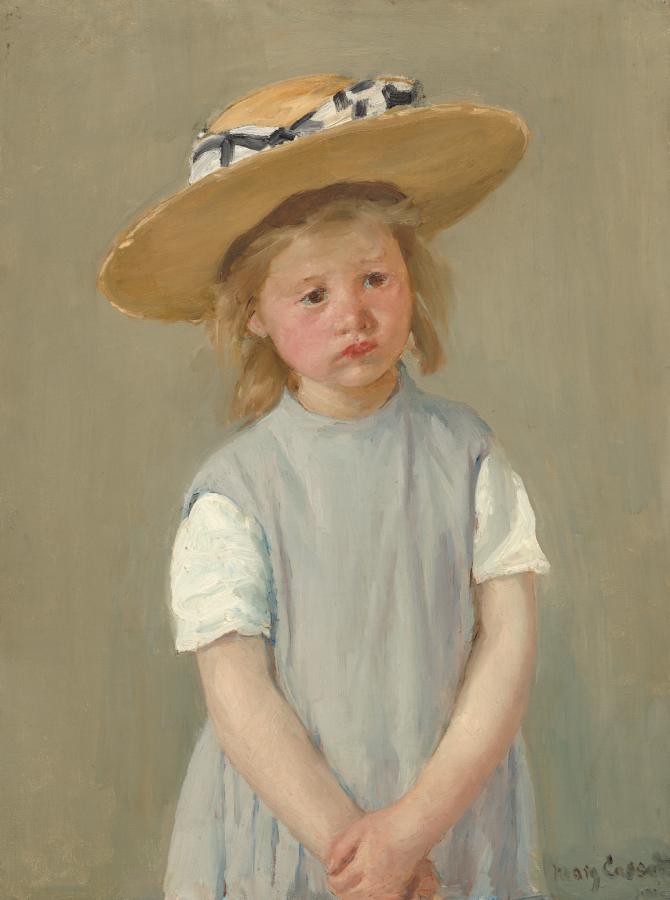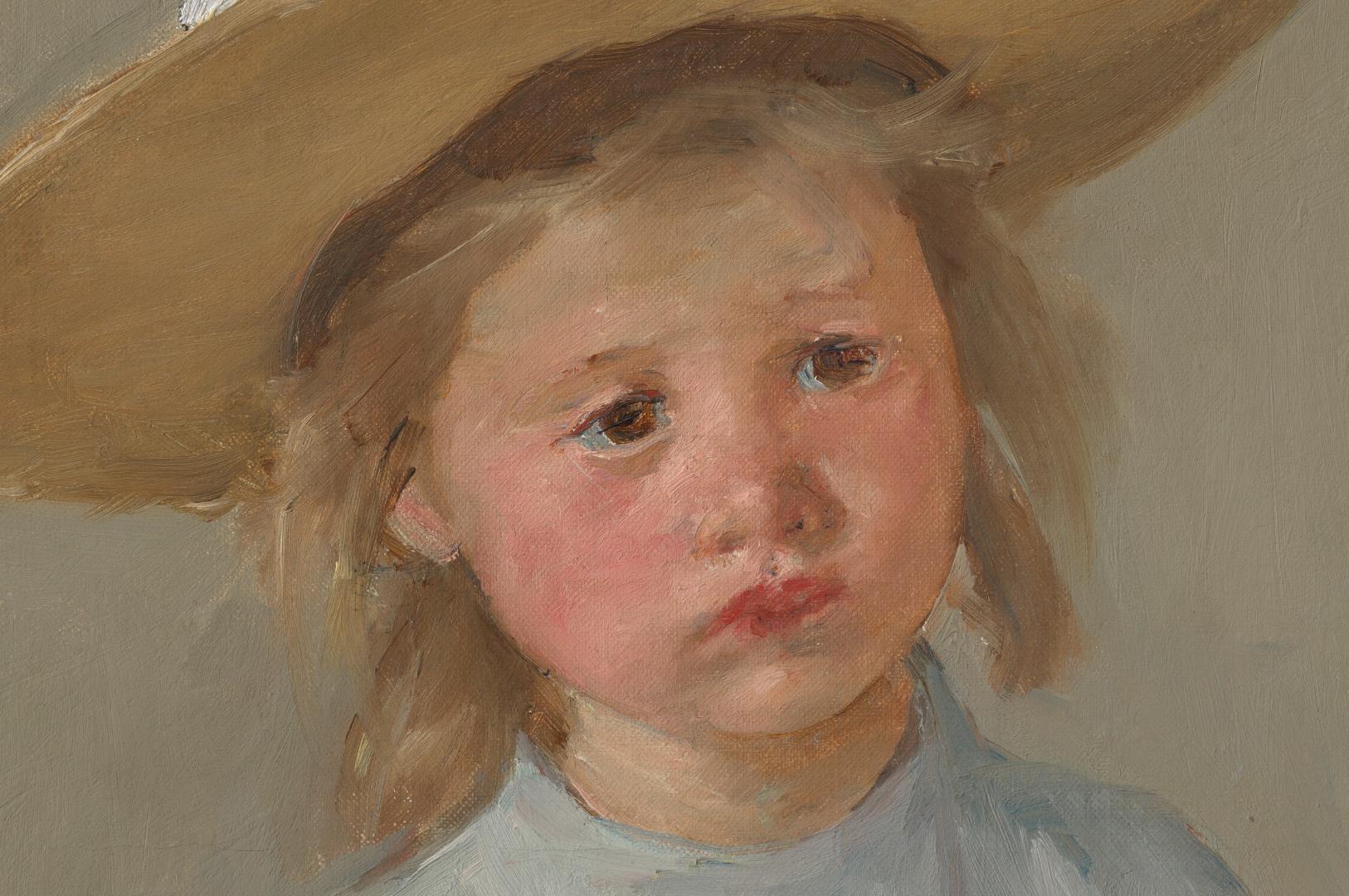Cassatt, Mary (1844-1926)
Child in a Straw Hat
c.1886
Oil on canvas, 65.3 x 49.2 cm
National Gallery of Art, Washington
Shown from the waist up, a young girl wearing a slate-gray dress and straw hat stands with her hands clasped in front of her in this vertical portrait painting. The girl has light, peachy skin, and her cheeks are lightly flushed. Her body faces us but she tips her head slightly to her right, our left, and looks off into the distance with dark brown eyes. Her faint eyebrows drawn together, and her cherry-red, full lips slightly turn down at the corners. She has a button nose and a rounded chin line. She has dark blond, straight, shoulder-length hair under a wide, flat-brimmed straw hat. The hat is wrapped around the crown with a checkered white and black bow. Her shoulders slope down as she holds one wrist with the other hand down in front of her. She wears a jumper over a shirt with short white sleeves. At first glance the jumper appears pale gray but closer inspection reveals strokes of pale lilac, ivory white, and cobalt blue. The girl’s features and clothing are painted with loose, visible brushstrokes, and the background behind her is painted with vertical strokes of tan blended with faint green. Short dabs of brighter gold and butter yellow give the impression of sunshine on the brim of the hat and in the girl’s hair. The artist signed the work with loose letters in the lower right corner, “Mary Cassatt.”
In her frequent depictions of children, Mary Cassatt invested relatively quiet and unexceptional moments with considerable dynamism in handling and composition.
Child in a Straw Hat is one of many paintings Cassatt made of little girls appearing to play dress-up. But where Cassatt often portrayed girls taking pleasure in the act of role-playing, here the child’s expression suggests that she is not enjoying herself. Isolated and required to stand still, her demeanor conveys a mixture of pensiveness, frustration, and boredom. While the subject matter captures a languid moment, the paint is handled energetically. Broad, visible brushstrokes are used throughout the composition, forming abstract patterns in some areas, such as the white sleeves of the blouse and smock. The paint was applied quickly and directly to the canvas, in a manner referred to as alla prima, which lends an appearance of spontaneity to the work. (NGA)

